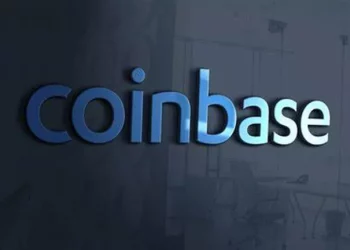Binance is one of the largest and most well-known cryptocurrency exchanges in the world. Binance Wallet is a digital wallet service provided by Binance that allows users to store, manage, and transfer a variety of cryptocurrencies. It offers a certain level of security and convenience for users to handle their digital assets.
Understanding Mining in the Blockchain Context
Mining is a crucial process in the blockchain ecosystem. It is the mechanism by which new blocks are added to the blockchain and transactions are verified and recorded. Miners use powerful computing equipment to solve complex mathematical problems. When a miner successfully solves a problem, they are rewarded with newly minted cryptocurrency tokens. For example, in the case of Bitcoin, miners compete to find a specific hash value that meets the network’s difficulty target. This process requires significant computational power and energy consumption.
Binance’s Role and Its Wallet’s Primary Functions
Binance Wallet is primarily designed for storing and transacting cryptocurrencies. It provides users with features such as wallet address generation, asset balance viewing, and the ability to send and receive different types of digital currencies. Binance focuses on facilitating trading activities on its exchange platform. It offers a seamless experience for users to move their assets between the exchange and their wallets. However, its core function is not centered around the mining process itself.
The Relationship between Binance Wallet and Mining
Technically, Binance Wallet does not directly enable or participate in the mining process. The wallet is a storage and transfer tool. It does not have the built-in functionality to initiate or conduct mining operations. Miners usually require specialized mining software and hardware setups. For instance, Bitcoin miners often use ASIC (Application-Specific Integrated Circuit) miners that are specifically designed to handle the complex calculations required for mining Bitcoin. These mining setups are independent of the Binance Wallet.
The Limitations of Using Binance Wallet for Mining
Lack of Mining Capabilities
Binance Wallet does not possess the algorithms or computing power necessary to perform mining tasks. It cannot compete with dedicated mining rigs in solving the complex mathematical problems associated with blockchain mining.
Security and Compatibility Issues
Even if one were to attempt to use the wallet in an unconventional way for mining, it could pose security risks. The wallet is not designed to handle the heavy workload and potential vulnerabilities that come with mining operations. Additionally, it may not be compatible with the specific software and protocols used by miners. For example, mining software often requires direct access to the computer’s hardware resources, and a wallet application is not optimized for such access.
Regulatory and Service Agreement Constraints
Binance, like other cryptocurrency service providers, operates under certain regulatory frameworks and service agreements. Using the wallet for activities it is not intended for, such as mining, may violate these agreements. Binance may have restrictions in place to prevent users from misusing its wallet services. This could lead to account suspension or other consequences for the user.
Alternatives to Binance Wallet for Mining
Dedicated Mining Wallets
There are specific wallets designed for miners. For example, Electrum is a popular wallet for Bitcoin mining. It is optimized to work with mining software and provides features such as efficient transaction management for mined coins. These wallets are often more lightweight and focused on the needs of miners, such as quick access to newly mined funds and seamless integration with mining pools.
Mining Pool Wallets
Many mining pools offer their own wallets. A mining pool is a group of miners who combine their computing power to increase the chances of successfully mining a block and sharing the rewards. Pool wallets are designed to handle the distribution of rewards among pool members. They are integrated with the pool’s operations and ensure a smooth process of crediting miners with their earned cryptocurrency. For instance, Slush Pool has its own wallet system that allows miners to receive their Bitcoin rewards directly and manage them within the pool’s ecosystem.
Hardware Wallet Integration with Mining Software
Some hardware wallets, like Ledger or Trezor, can be used in conjunction with mining software. While they are not the main tool for mining, they can provide an added layer of security for storing the mined cryptocurrency. Miners can configure their mining software to send the newly minted coins to their hardware wallets for safekeeping. This way, they can protect their assets from potential online threats while still being able to participate in the mining process.
Conclusion
Binance Wallet is not suitable for use in the mining process. Its design and functionality are centered around asset storage and transfer rather than the complex and resource-intensive task of mining. Miners should explore dedicated mining wallets, mining pool wallets, or combinations of hardware wallets with mining software to ensure a smooth and secure mining experience. It is important to understand the limitations and proper uses of different wallet types in the context of blockchain mining to avoid potential risks and ensure compliance with service agreements and regulatory requirements. The blockchain and cryptocurrency space is constantly evolving, and users need to stay informed about the best practices and available tools for their specific activities, whether it is trading, storing, or mining digital assets.
Related Topics:

















